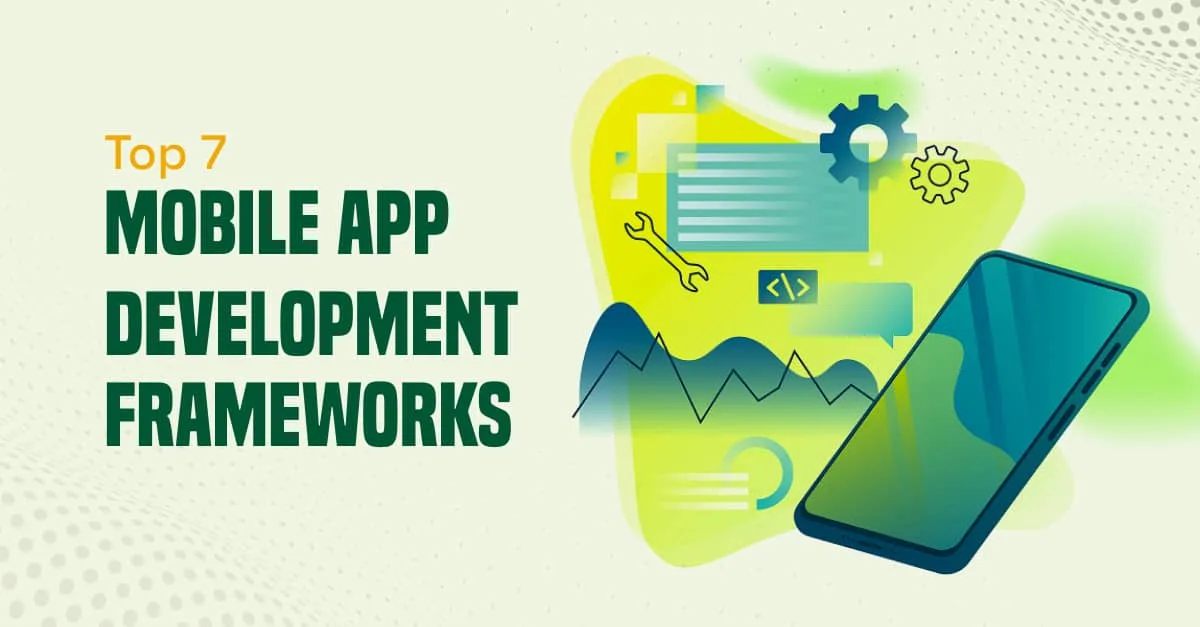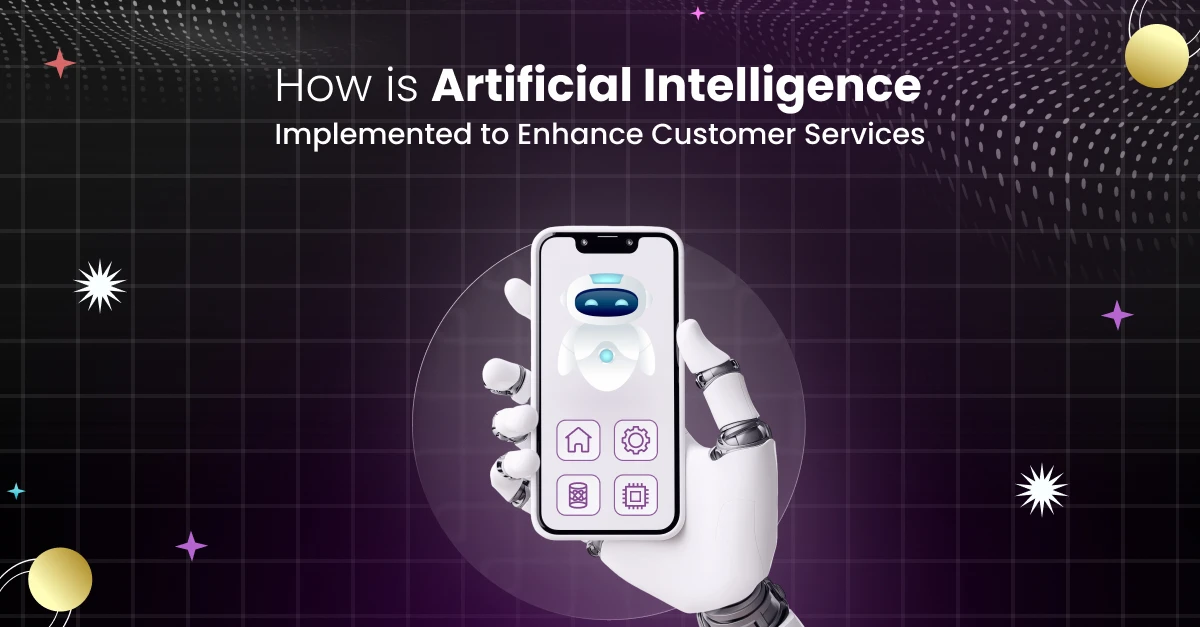Top 7 Mobile App Development Frameworks

Thriving in today’s competitive digital landscape requires businesses with mobile apps or those looking for new app development must require innovative ways to develop thorough strategies and analyze the existing mobile environment. To employ frameworks for mobile app development to construct a cross-platform, hybrid, or web-based mobile app for businesses. A mobile app framework serves as a platform to develop software encompassing other things like software, tool and programming interfaces. Modern frameworks have a few advantages already built in, encompassing speed, efficiency, and a bug-free environment. They seamlessly execute a company’s code to showcase applications on target devices, leveraging pre-built components like compilers, debugging tools, and a toolkit. The utilization of these app development platforms not only expedites but also simplifies the app creation process. To assist businesses in this dynamic landscape, we present the top 7 mobile app development Frameworks, each offering unique features and capabilities. Explore these frameworks to choose the one that aligns with your development goals. #1. React Native React Native is an open-source, cross-platform application development framework that was created and backed by Facebook. It has swiftly gained popularity among programmers. Creating mobile applications for iOS and Android is made easier with React Native. React Native apps from well-known companies like Tesla, Airbnb, Skype, and Amazon Prime are the best examples. The operating codes of React and React Native are nearly identical. Except that the Virtual DOM will not be used by React Native to change the DOM. Instead, it functions as a background process analyzing the JavaScript written by developers on the end device. It communicates with the native platform through serialized data sent via an asynchronous, batched bridge. Beyond these aspects, React Native has other crucial features, including component-based GUI design for front-end apps, integration with third-party extensions, and reusable elements. Advantages: #2. Flutter Google’s Flutter framework emerges as a game-changer in mobile app development, allowing the construction of native Android and iOS applications with a simple yet powerful codebase. This open-source and free SDK revolutionizes cross-platform application development, which sets it apart since it employs a cutting-edge method for producing native-like programs. It is the best and most reliable smartphone UI framework for hurriedly creating engaging apps by expediting development. Flutter is a comprehensive and precise framework, which provides developers with a set of tools for creating and launching visually appealing mobile applications. It encompasses widgets, a rendering engine, debugging capabilities, and seamless integration with APIs. Many leading companies, including Google and Abbey Road Studios, have already started embracing Flutter. Advantages: #3. Xamarin Xamarin, a distinct cross-platform application development framework for iOS and Android app creation, distinguishes itself by utilizing C# for coding. It drastically decreases the amount of code needed. As a result, coding goes more quickly. Besides, it helps to move the scripts between various operating systems including Windows and macOS. Apps built using Xamarin, however, provide full native functionality regarding quality and effectiveness. As an outcome, its integration with Microsoft Visual Studio benefits in boosting productivity during app development. An intermediate layer in Xamarin manages the relationship between the standard code and the core system code. This architecture assists programmers in creating an environment with APIs, backends, and components by leveraging tools, frameworks, and well-supported computer languages. Advantages: #4. Ionic Ionic framework supports creating Progressive Web Apps (PWAs), hybrid, and other cross-platform mobile applications. Programming professionals may use Android and iOS applications by leveraging the Ionic framework, which also joins Angular with Apache Cordova (PhoneGap). The framework also empowers the development of feature-rich native Apps. It assists developers in using different UI elements in the framework like navigation, views, inputs, filters action sheets. Advantages: #5. NativeScript NativeScript, a precise open-source framework, employs Angular, Typescript, JavaScript, CSS, and Vue.js to construct native mobile applications. Developed by Progress, NativeScript provides a comprehensive solution for building powerful and efficient native apps. The framework utilizes well-established technologies, including the npm package manager for easy installation of NativeScript and required plugins. The development process with NativeScript involves utilizing either the GUI application NativeScript Sidekick or the command line. These tools enable developers to create, configure, and manage tasks seamlessly, enhancing the efficiency of the app development lifecycle. Platform-independent user interfaces are defined with the usage of XML files. The native UI components of every platform are navigated by NativeScript once it operates the interference suggested in the XML files. It further enables constructing application logic independently of the target platform by using TypeScript and Angular. The node .js runtime and tooling are utilized for creating a framework to develop native mobile applications. A better framework to reduce the amount of code and load time for the program on the system is the native script. Advantages: #6. Swiftic Swiftic is a self-contained mobile app development platform that aims to make it simple for anyone to create original applications for their business. By enabling programmers to include recent content from the internet rather than beginning from scratch, it streamlines the development of apps. It facilitates programmers to encompass recent content from the internet instead of beginning from the start and streamlines the development. The platform architecture includes features like push notifications, social networking platform feeds, app advertising, and other technology advancements. Since you can build, release, and expand your app from a single control panel, it is one of the simplest methods for creating mobile apps. Advantages: #7. Onsen UI Onsen UI is regarded as the most useful tool when creating complex mobile applications. It is among the greatest and most used technologies for creating mobile applications. Brilliant HTML apps are produced by mobile app development technologies using JavaScript, HTML, and CSS. Additionally, it supports Angular JS1, Angular 2+, React, and Vue libraries. Depending on the platform, this platform has proficiency in app formation. It encompasses various UI elements like tabs, lists, forms, and stack navigation. With Onsen UI version 2, developers may now create mobile apps with or without any JavaScript framework because it has developed to be JavaScript framework-agnostic. Onsen UI makes it simple to create hybrid and Progressive Web Apps (PWAs) that seem native. Because the fundamental archive is context-skeptical and written entirely in JavaScript, you can use it with any framework and its associated tools. The optional platform-based auto-styling ensures support for both iOS and Android with just one source file. Advantages: Conclusion – Embracing these frameworks empowers businesses to navigate the challenges of the digital landscape efficiently. Each framework offers its unique advantages, catering to diverse development needs. Whether it’s React Native’s performance or Flutter’s native-like UI, staying informed about these frameworks becomes crucial for businesses striving to deliver optimal user experiences.









